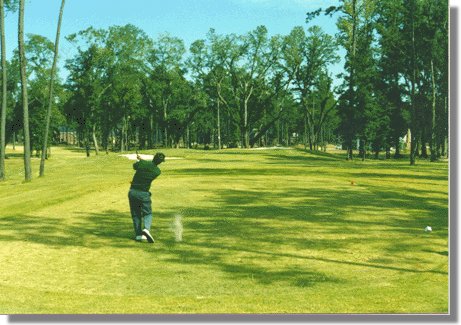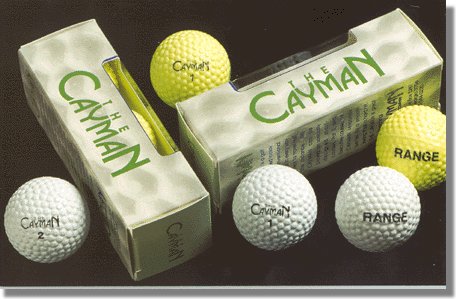
William W. Amick
ASGCA Golf Course Architect
|
|
|
|
|
|
|
Cayman
Golf Courses
Where less golf is more fun to some…
|
This
game of golf is good! Otherwise,
why would more than 26 million Americans and large numbers in
other countries around the world pursue it with such passion?
Golf is played outdoors on green grass with friends, family
members, strangers just met and alone.
It’s mild exercise yet an invigorating experience that
can either be done in intense competition or leisurely enjoyment.
But golf is not perfect. One
drawback is that in an individual’s early stages of the
game, because of the complexity of learning the golf swing and
difficulty of some courses, many quit before they become very
accomplished. Baseball
is also demanding. That’s
one reason softball is much more popular as a participation sport
than baseball. Cayman
golf is somewhat like softball in providing most of the benefits
of golf without some of its drawbacks.
In
the 1930s William H. Diddel, a golf course architect in
Indianapolis, first conceived of a golf-like game to make starting
golf easier and to shrink the size of courses.
Unfortunately Mr. Diddel was never able to obtain a
reduced-distance ball which performed satisfactorily.
In the 1980s pro golfer Jack Nicklaus asked the MacGregor
Golf Company to develop a ball for an small course his design
company was laying out on Grand Cayman Island.
Troy Puckett, then MacGregor’s top golf equipment
engineer, produced a suitable ball composed mainly of DuPont’s
Surlyn. Mr. Puckett has further improved that ball and his company
now manufactures it as The Cayman ball.
These balls can be purchased from the P.O.
Box 5287 USA,
phones
e-mail info@caymangolf.com Web site The
Cayman ball is the same size as a golf ball.
Instead of dimples it has a brambled surface and weighs 24
grams, compared to the approximately 45 grams of a golf ball.
Together these restrict its distance to only slightly more
than half the distance of a golf ball with a fast swing and a
greater percentage with a slower swing.
Its lightness also permits beginners to easily get this
ball airborne and prevents miss hits from ever stinging their
hands, common drawbacks to these players with a golf ball.
Cayman
golf is more readily accepted by those who have never played golf,
particularly juniors. To
these people this game has several additional advantages over
golf. Cayman courses
have much lower fees and are a shorter walk. At first a conventional golf course can seem a hostile place,
because of the attitude of many experienced golfers there.
A round of cayman golf takes much less time to complete,
critical to anyone short on free time or initially with a limited
span of concentration or interest. Seven
or eight club are adequate for a cayman player versus the standard
14 clubs in a golf set, further reducing beginning costs.
Learners frequently hit off-line shots, but being struck by
an errant cayman ball is unlikely to injure anyone.
A softball is also less A
cayman course offers several large pluses to developers over a
traditional 18-hole golf course.
There is the savings in land and cayman courses cost much
less to construct or maintain. Since most cayman players have little exposure to the fine
turfgrass at country clubs with high-priced dues, upscale public
courses or championship resort courses, the intense level of
maintenance for the smaller cayman course is not so expected.
These combine to mean much lower amounts of fertilizer,
chemicals and water required, lessening these courses’ impact on
the surrounding environment and decreasing their non-renewable
energy use. To
date a majority of cayman ball sales have been to schools and
colleges for teaching golf on athletic fields and within
gymnasiums during bad weather.
Teachers say this works great and is safer to students.
I designed the first 18-hole cayman course in the USA, Eagle Landing Golf Course. Now there are cayman courses in England and Japan. Currently I am designing a cayman course under The First Tee program, mainly for kids who would have little chance of getting on a regular golf course. When young people are not using this course, it will be available to adults for a small fee. This 17-acre facility will have nine holes with a par of 36 and a cayman range. Plans are to light it for evening play. Cayman
courses within urban areas, in the suburbs and at resorts can
either be by themselves or with a traditional-sized golf course.
Like for big courses, for best results cayman courses
should be properly designed, constructed, maintained, operated and
marketed. These modified golf courses at first may mainly attract young
people, anyone who wants to learn to play golf, Cayman
balls float on water hazards and streams.
Some excellent cayman courses could put this game
“afloat” in our mainstream of recreational activities.
|
|
|
| Professional Golf Course Designer - Bill Amick |
| P.O.
Box 1984 Daytona Beach, FL 32115 Telephone (386) 767-1449 |
| amick@iag.net |

 Cayman
Golf Company
Cayman
Golf Company dangerous
than a baseball, another similarity of these games.
dangerous
than a baseball, another similarity of these games. families playing together, many women, older seniors and disabled
persons.
families playing together, many women, older seniors and disabled
persons.